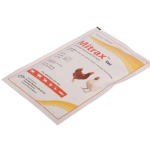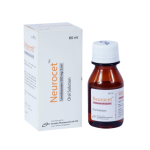Lemodip(Levamlodipine Maleate)

Therapeutic Group: Combined Antihypertensive preparation
Presentation
LemodipTM 1.25 Tablet: Each tablet contains Levamlodipine Maleate INN equivalent to Levamlodipine 1.25 TM
LemodipTM 2.5 Tablet: Each tablet contains Levamlodipine Maleate INN equivalent to Levamlodipine 2.5 mg.
Lemodip 5 Tablet: Each tablet contains Levamlodipine Maleate INN equivalent to Levamlodipine 5 mg.
Description
The active ingredient of Lemodip is the maleate salt of levamlodipine, the pharmacologically active isomer of amlodipine, a long-acting calcium channel blocker.
Amlodipine is a dihydropyridine calcium antagonist (calcium ion antagonist or slow-channel blocker) that inhibits the transmembrane influx of calcium ions into vascular smooth muscle and cardiac muscle. Experimental data suggest that amlodipine binds to both dihydropyridine and nondihydropyridine binding sites. The contractile processes of cardiac muscle and vascular smooth muscle are dependent upon the movement of extracellular calcium ions into these cells through specific ion channels. Amlodipine inhibits calcium ion influx across cell membranes selectively, with a greater effect on vascular smooth muscle cells than on cardiac muscle cells.
Amlodipine is a peripheral arterial vasodilator that acts directly on vascular smooth muscle to cause a reduction in peripheral vascular resistance and reduction in blood pressure.
Amlodipine is a 1:1 racemic mixture of levamlodipine and dextro amlodipine, it has been demonstrated that levamlodipine is the pharmacologically active, anti-hypertensive isomer.
Indications
Lemodip is calcium channel blocker and may be used alone or in combination with other antihypertensive agents for the treatment of hypertension, to lower blood pressure. Lowering blood pressure reduces the risk of fatal and nonfatal cardiovascular events, primarily strokes and myocardial infarctions.
Dosage & Administration
• Adult: Recommended starting dose 2.5 mg orally once daily with maximum dose 5 mg once daily
– Small, fragile, or elderly patients, or patients with hepatic insufficiency may be started on 1.25 mg once daily – Adjust dosage according to blood pressure goals. In general, wait 7 to 14 days between titration steps. Titrate more rapidly, however, if clinically warranted, provided the patient is assessed frequently
• Pediatric: The effective antihypertensive oral dose in pediatric patients ages 6–17 years is 1.25 mg to 2.5 mg once daily. Doses in excess of 2.5 mg daily have not been studied in pediatric patients.
Side Effects
Most common adverse reaction to amlodipine is edema which occurred in a dose related manner. Other adverse experiences not dose related but reported with an incidence >1.0% are fatigue, nausea, abdominal pain and somnolence.
Cardiovascular: arrhythmia (including ventricular tachycardia and atrial fibrillation), bradycardia, chest pain, peripheral ischemia, syncope, tachycardia, vasculitis.
Central and Peripheral Nervous System: Hypoesthesia, neuropathy peripheral, paresthesia, tremor, vertigo.
Gastrointestinal: Anorexia, constipation, dysphagia, diarrhea, flatulence, pancreatitis, vomiting, gingival hyperplasia.
General: Allergic reaction, asthenia, back pain, hot flushes, malaise, pain, rigors, weight gain, weight decrease.
Musculoskeletal System: Arthralgia, arthrosis, muscle cramps, myalgia.
Psychiatric: Sexual dysfunction (male and female), insomnia, nervousness, depression, abnormal dreams, anxiety, depersonalization.
Respiratory System: Dyspnea, epistaxis.
Skin and Appendages: Angioedema, erythema multiforme, pruritus, rash, rash erythematous, rash maculopapular.
Special Senses: Abnormal vision, conjunctivitis, diplopia, eye pain, tinnitus.
Urinary System: Micturition frequency, micturition disorder, nocturia.
Autonomic Nervous System: dry mouth, sweating increased.
Metabolic and Nutritional: Hyperglycemia, thirst.
Hemopoietic: Leukopenia, purpura, thrombocytopenia.
*These events occurred in less than 1% in placebo-controlled trials, but the incidence of these side effects was between 1% and 2% in all multiple dose studies.
Precautions
• Hypotension: Symptomatic hypotension is possible, particularly in patients with severe aortic stenosis. However, acute hypotension is unlikely
• Increased Angina or Myocardial Infarction: Worsening angina and acute myocardial infarction can develop after starting or increasing the dose of amlodipine, particularly in patients with severe obstructive coronary artery disease
• Patients with Hepatic Failure: Titrate slowly in patients with severe hepatic impairment.
Use in Pregnancy & Lactation
• Pregnancy: The limited available data based on post-marketing reports with amlodipine use in pregnant women are not sufficient to inform a drug-associated risk for major birth defects and miscarriage. There are risks to the mother and fetus associated with poorly controlled hypertension in pregnancy
• Nursing Mothers: No adverse effects of amlodipine on the breastfed infant have been observed. There is no available information on the effects of amlodipine on milk production.
• Pediatric Patients: Effect on patients less than 6 years old is not known. • Geriatric Patients: Start dosing at the low end of the dose range.
Drug Interaction
Do not exceed doses greater than 20 mg daily of simvastatin during treatment period.
Over Dose
Overdosage might be expected to cause excessive peripheral vasodilation with marked hypotension and possibly a reflex tachycardia. In humans, experience with intentional overdosage of amlodipine is limited. If massive overdose should occur, initiate active cardiac and respiratory monitoring. Frequent blood pressure measurements are essential. Should hypotension occur, provide cardiovascular support including elevation of the extremities and the judicious administration of fluids. If hypotension remains unresponsive to these conservative measures, consider administration of vasopressors (such as phenylephrine) with attention to circulating volume and urine output. As amlodipine is highly protein bound, hemodialysis is not likely to be of benefit.
Storage
Do not store above 30°C. Keep away from light and out of the reach of children.
Commercial Pack
LemodipTM 1.25 Tablet: Each box contains 3 blister strips of 10 tablets
LemodipTM 2.5 Tablet: Each box contains 3 blister strips of 10 tablets
Lemodip 5 Tablet: Each box contains 3 blister strips of 10 tablets


